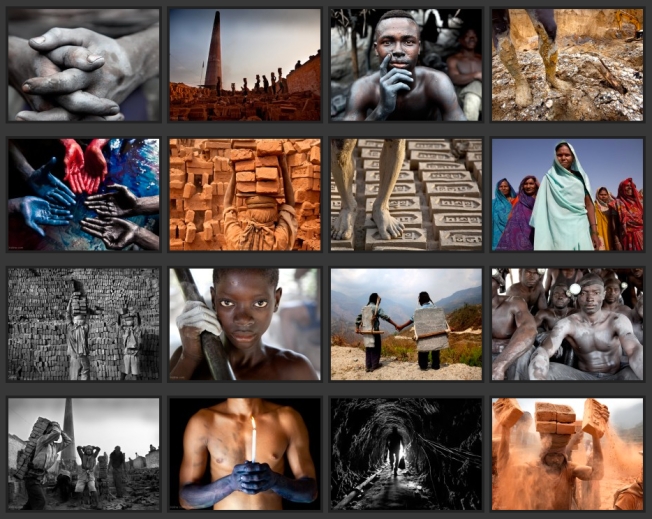
Monsieur Lazhar touches the children world, the death world, the immigrant world, the silent world, the unfair world. In other words, it is about oppression and omission. All a child need is love and safeness to express themselves…
Review by Stephen Holden:
“”In the indelible opening scene of Philippe Falardeau’s “Monsieur Lazhar,” Simon (Émilien Néron), a sixth grader at a Montreal middle school, catches a glimpse of the body of Martine, a popular teacher who has hanged herself from a pipe inside a classroom. He turns and runs.
We don’t see him report the fatality. The camera remains stationary, in a kind of daze, until several teachers dash into the building and frantically herd children returning from recess back outside. Simon’s friend Alice (Sophie Nélisse) detaches herself just long enough to steal a peek through a crack in the door before being shooed away. We never see the victim’s face.
The subtlety and discretion with which the revelation is handled says much about “Monsieur Lazhar,” Mr. Falardeau’s fourth feature film, adapted from a one-person play by Evelyne de la Chenelière. The film, which was nominated for an Oscar for best foreign language film, picked up six Genies (Canadian Oscars), including best picture, director, adapted screenplay and actor. The title character is powerfully embodied by Fellag, an Algerian theater director and actor known for his one-man shows, who has lived in Paris since 1995.
“Monsieur Lazhar” sustains an exquisite balance between grown-up and child’s-eye views of education, teacher-student relations and peer-group interactions. The students come quirkily alive in superb naturalistic performances devoid of cuteness and stereotyping. Like no other film about middle school life that I can recall “Monsieur Lazhar” conveys the intensity and the fragility of these classroom bonds and the mutual trust they require.
Although it looks askance at the extreme measures parents and teachers take to protect children, often more knowledgeable and resilient than they’re given credit for, it acknowledges that some do need protection. It especially calls into question the strict modern rules that forbid any physical contact between teachers and students who in moments of crisis feel a desperate need for the comfort and reassurance that a hug can provide.
Amid the tempest stands the title character, Bachir Lazhar, a 55-year-old Algerian immigrant in need of a job who read about the suicide and presents himself to the stiff-backed principal (Danielle Proulx) as a substitute. Bachir, who says he taught grade school in Algiers for 19 years before settling in Quebec, seems to be a godsend. Polite, formal and soft-spoken, he takes over a class whose students are traumatized to varying degrees and easily wins their confidence and affection.
He is sternly instructed not to bring up the suicide and told that a psychologist will deal with the children’s reactions. During those sessions he is not allowed in the classroom. Bachir proves himself a caring, dedicated teacher, although there are some glitches. A dictation from Balzac is too difficult for his students. There are differences between Québécois and Algerian French. Most important, he doesn’t know the rules about physical contact and lightly cuffs an unruly student.
He teaches the fables of La Fontaine, and in an inspired stroke invites the students to invent their own. In the film’s most moving scene he regales them with one he invented about a chrysalis and a tree that addresses both Martine’s suicide and his own recent personal calamity, which he is barely able to talk about. Bachir isn’t exactly what he claims. In Algeria he was a civil servant who later owned a restaurant but has never taught. Nor is he, as he has stated, a permanent resident of Quebec. He is applying for political asylum following the horrific murder of his wife, a teacher, and their two children in a fire deliberately set the night before they were to have left Algeria to join him in Canada. The Lazhar family had been subjected to repeated death threats since the publication of his wife’s book criticizing the government’s reconciliation policy after the country’s civil war.
Without pushing the parallels, the story obliquely connects Bachir’s story with his empathy for the children, especially his intuition that Simon’s distress is more complex and deeply rooted than it at first appears. When the truth is finally revealed in a flood of tears, the boy’s heart-rending confession reminds you of how easily children can torture themselves with guilt for imagined sins.
Bachir cannot follow the rules. When the class needs his emotional support, he delivers a healing, common-sense speech about the suicide to the students who take it in stride. You applaud him for his bravery and tact.
“Don’t try to find a meaning in Martine’s death; there isn’t one,” this flawed hero declares. “A classroom is a place of friendship, of work, of courtesy, a place of life.”
—
Written and directed by Philippe Falardeau, based on the stage play by Evelyne de la Chenelière; director of photography, Ronald Plante; edited by Stéphane Lafleur; music by Martin Léon; production design by Emmanuel Fréchette; costumes by Francesca Chamberland; produced by Luc Déry and Kim McCraw; released by Music Box Films. In French, with English subtitles. Running time: 1 hour 34 minutes.
WITH: Fellag (Bachir Lazhar), Sophie Nélisse (Alice), Émilien Néron (Simon), Danielle Proulx (Mrs. Vaillancourt), Brigitte Poupart (Claire), Louis Champagne (Janitor), Jules Philip (Gaston), Francine Ruel (Mrs. Dumas) and Sophie Sanscartier (Audrée).””

































